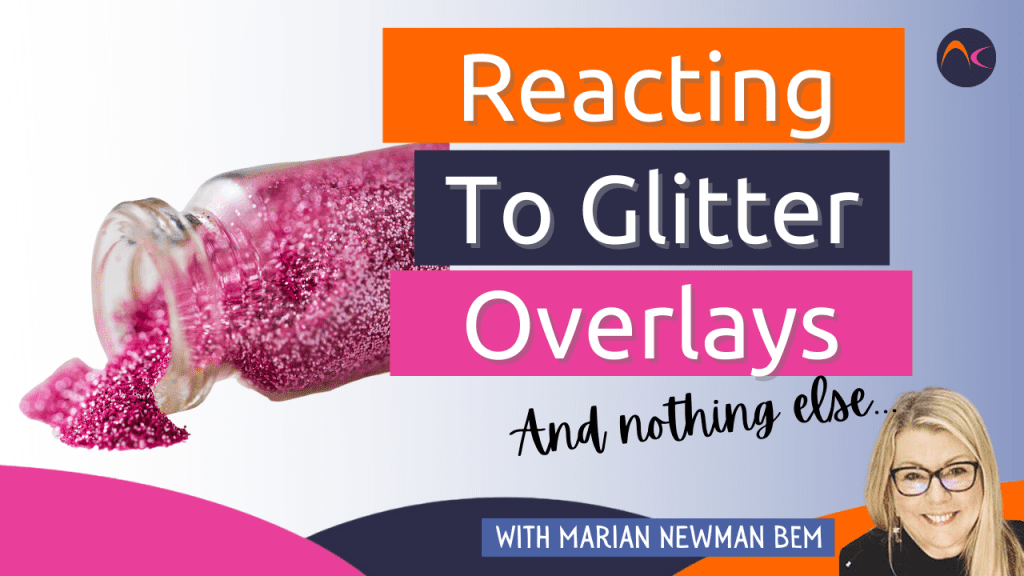This is being written in mid-December so there is lots of glitter around! Funny that!
It seems a lot of nail pros are reacting to an overlay when it contains glitter but not when it doesn’t.
Why is that? Well, let’s think about it…..
É muito improvável que alguém reaja ao glitter em si, pois ele é um sólido. No entanto, é possível reagir a um glitter não aprovado cosmeticamente (ou seja, um glitter para artesanato).
So what is going on? What may be going on is the glitter inhibiting a proper cure! (Please watch the Alergias e como elas ocorrem vídeo para entender melhor)
The pieces of glitter may be too many and/or too big to allow the overlay, whether it’s a UV gel or L&P, to properly cure (the video will explain the polymer linkage). They may be blocking linkage and leaving some unreacted monomers behind which can then leach out!
Visualize this: watch how the polymer links are formed. Imagine a huge (and it is huge in comparison to the monomers) piece of glitter forms a ‘wall’ to prevent these links from happening. Unreacted monomers (or oligomers) can be trapped behind this wall.
Correctly formulated UV gel polish with glitter will have addressed this. It may be that the ‘manufacturers instructions’ recommend 1-2 very thin layers so there is not too much glitter that is stopping a ‘proper cure’. If not, the good quality brands will have made sure that an ‘undercure’ is unlikely to happen.
The same applies to L&P polymer powder and sistemas de imersão.
A polymer powder with glitter needs to be correctly formulated to allow a proper cure. PLUS there are manufacturers’ instructions on the ratio of powder to liquid monomer and the thickness of the layers of an overlay. (This is another reason to undertake brand education).
Dip powders have a similar potential issue. Those using a UV gel dip system, they dip an uncured UV gel coating into the powder. This sinks into the coating and is then cured. It COULD result in an undercured coating. It is less likely to occur with a cyanoacrylate dip system but not impossible.
Além disso, consulte o BPO (peróxido de benzoíla) O que e por quê? blog on BPO allergies on polymer powders that are not formulated specifically for dipping systems.
There are some brands that suggest mixing pigments and glitters with their products. They should recommend the percentage that will still allow a proper cure. This is often 30% or less. For the bigger glitters, this is likely to be a lot less for all the reasons described above.
No entanto, se você estiver reagindo com ou sem glitter, você TEM uma alergia! A única maneira de resolver isso é remover todos os produtos e providenciar um teste dermatológico para descobrir exatamente a quais ingredientes você está reagindo. Isso permitirá que você encontre uma marca com a qual possa continuar a trabalhar. Tomar remédios ou usar cremes apenas suprime os sintomas. Eles NÃO impedem a causa, que estará com você para sempre.
Para concluir, use marcas confiáveis e de boa qualidade. Elas terão sido testadas minuciosamente para uma cura adequada e, portanto, evitarão reações indesejadas.


